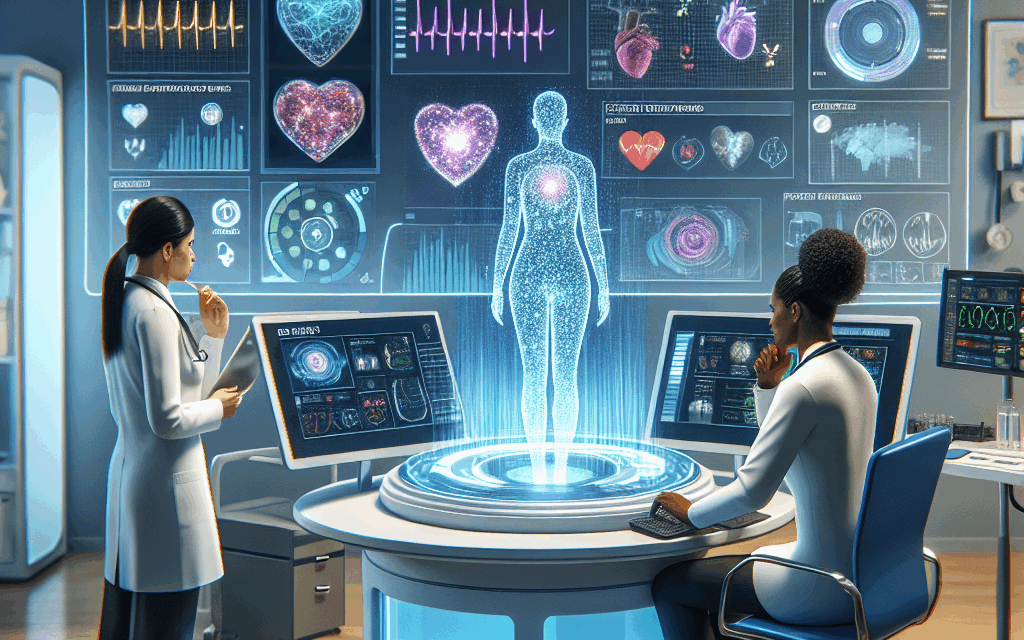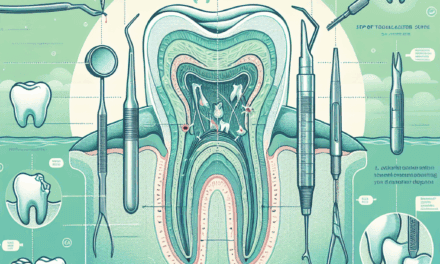Enhancing Clinical Decision-Making through Predictive Health Informatics
In the rapidly evolving landscape of healthcare, the integration of technology and data analytics has become paramount. Predictive health informatics stands at the forefront of this transformation, offering tools and methodologies that enhance clinical decision-making. By leveraging vast amounts of data, predictive analytics can provide insights that lead to improved patient outcomes, optimized resource allocation, and more personalized care. This article delves into the various dimensions of predictive health informatics, exploring its significance, methodologies, applications, challenges, and future directions.
1. Understanding Predictive Health Informatics
Predictive health informatics is a branch of health informatics that utilizes statistical algorithms and machine learning techniques to analyze historical and real-time data. The goal is to predict future health outcomes, identify potential risks, and support clinical decision-making. This section will explore the foundational concepts of predictive health informatics, its components, and its relevance in modern healthcare.
1.1 Definition and Components
Predictive health informatics encompasses a variety of components, including:
- Data Collection: Gathering data from electronic health records (EHRs), wearable devices, and other sources.
- Data Processing: Cleaning and organizing data to ensure accuracy and relevance.
- Statistical Analysis: Applying statistical methods to identify patterns and correlations within the data.
- Machine Learning: Utilizing algorithms that can learn from data and make predictions based on new inputs.
- Visualization: Presenting data insights in a user-friendly manner to facilitate understanding and decision-making.
These components work together to create a robust framework for predicting health outcomes and informing clinical decisions.
1.2 Importance in Healthcare
The importance of predictive health informatics in healthcare cannot be overstated. It offers several advantages, including:
- Improved Patient Outcomes: By predicting potential health issues, clinicians can intervene early, leading to better patient outcomes.
- Cost Efficiency: Predictive analytics can help healthcare organizations allocate resources more effectively, reducing unnecessary expenditures.
- Personalized Medicine: Tailoring treatment plans based on predictive insights allows for more personalized patient care.
- Enhanced Population Health Management: Identifying at-risk populations enables targeted interventions and preventive measures.
As healthcare continues to evolve, the role of predictive health informatics will only grow in significance, shaping the future of clinical decision-making.
2. Methodologies in Predictive Health Informatics
The methodologies employed in predictive health informatics are diverse and complex, involving various statistical and computational techniques. This section will explore the primary methodologies used in predictive analytics, including regression analysis, machine learning, and natural language processing.
2.1 Regression Analysis
Regression analysis is one of the most fundamental statistical techniques used in predictive health informatics. It involves modeling the relationship between a dependent variable (e.g., patient outcomes) and one or more independent variables (e.g., age, comorbidities). There are several types of regression analysis, including:
- Linear Regression: Used for predicting continuous outcomes based on linear relationships.
- Logistic Regression: Suitable for binary outcomes, such as the presence or absence of a disease.
- Multivariate Regression: Analyzes multiple variables simultaneously to understand their combined effect on outcomes.
Regression analysis is particularly useful in clinical settings for risk stratification and outcome prediction. For example, a study published in the Journal of the American Medical Association (JAMA) demonstrated how logistic regression could predict the likelihood of hospital readmission based on patient demographics and clinical history.
2.2 Machine Learning Techniques
Machine learning (ML) has revolutionized predictive health informatics by enabling the analysis of large datasets with complex patterns. Key ML techniques include:
- Decision Trees: A flowchart-like structure that makes decisions based on input features.
- Random Forests: An ensemble method that combines multiple decision trees to improve accuracy.
- Support Vector Machines (SVM): A classification technique that finds the optimal hyperplane to separate different classes.
- Neural Networks: Inspired by the human brain, these models are particularly effective for image and speech recognition tasks.
Machine learning has been successfully applied in various clinical scenarios, such as predicting patient deterioration in intensive care units (ICUs) and identifying patients at risk for chronic diseases. For instance, a study in the journal Health Affairs highlighted how ML algorithms could predict sepsis onset hours before traditional clinical indicators, allowing for timely intervention.
2.3 Natural Language Processing (NLP)
Natural language processing (NLP) is a subfield of artificial intelligence that focuses on the interaction between computers and human language. In healthcare, NLP is used to extract meaningful information from unstructured data sources, such as clinical notes and patient records. Key applications of NLP in predictive health informatics include:
- Clinical Text Mining: Extracting relevant information from clinical narratives to enhance predictive models.
- Sentiment Analysis: Understanding patient sentiments from feedback and reviews to improve care quality.
- Information Retrieval: Enhancing search capabilities within EHRs to find relevant patient information quickly.
NLP has shown promise in improving clinical decision-making by providing insights from vast amounts of unstructured data. For example, a study published in the Journal of Biomedical Informatics demonstrated how NLP could identify patients with undiagnosed diabetes by analyzing clinical notes, leading to earlier diagnosis and treatment.
3. Applications of Predictive Health Informatics
The applications of predictive health informatics are vast and varied, impacting numerous aspects of healthcare delivery. This section will explore key applications, including risk assessment, disease prediction, treatment optimization, and resource management.
3.1 Risk Assessment
Risk assessment is a critical application of predictive health informatics, enabling healthcare providers to identify patients at high risk for adverse outcomes. By analyzing historical data, predictive models can stratify patients based on their likelihood of developing complications or requiring hospitalization. Key areas of risk assessment include:
- Cardiovascular Risk: Predictive models can assess factors such as age, cholesterol levels, and family history to estimate a patient’s risk of heart disease.
- Oncology: Predictive analytics can identify patients at high risk for certain cancers based on genetic and lifestyle factors.
- Chronic Disease Management: Models can predict the risk of complications in patients with chronic conditions like diabetes or hypertension.
For instance, the Framingham Heart Study has developed a widely used risk assessment tool that estimates a person’s 10-year risk of developing cardiovascular disease based on various risk factors. Such tools empower clinicians to implement preventive measures and tailor treatment plans accordingly.
3.2 Disease Prediction
Predictive health informatics plays a crucial role in disease prediction, allowing for early identification and intervention. By analyzing patterns in patient data, predictive models can forecast the likelihood of disease onset. Key examples include:
- Diabetes Prediction: Machine learning algorithms can analyze factors such as BMI, age, and family history to predict the risk of developing type 2 diabetes.
- Infectious Disease Outbreaks: Predictive models can analyze social media trends and historical data to forecast outbreaks of diseases like influenza or COVID-19.
- Mental Health: Predictive analytics can identify individuals at risk for mental health disorders based on demographic and behavioral data.
A notable example is the use of predictive analytics in the COVID-19 pandemic, where models were developed to forecast infection rates and guide public health interventions. These models helped healthcare systems prepare for surges in cases and allocate resources effectively.
3.3 Treatment Optimization
Predictive health informatics also enhances treatment optimization by providing insights into the most effective interventions for individual patients. By analyzing data from previous cases, predictive models can recommend personalized treatment plans. Key areas of treatment optimization include:
- Pharmacogenomics: Predictive analytics can guide medication selection based on a patient’s genetic profile, minimizing adverse drug reactions.
- Clinical Pathways: Models can identify the most effective treatment pathways for specific conditions, improving patient outcomes.
- Adherence Monitoring: Predictive tools can identify patients at risk of non-adherence to treatment plans, allowing for targeted interventions.
For example, a study published in the journal Nature Medicine demonstrated how machine learning could predict which cancer patients would respond best to specific therapies, leading to more effective treatment strategies and improved survival rates.
3.4 Resource Management
Effective resource management is essential for healthcare organizations to operate efficiently. Predictive health informatics can optimize resource allocation by forecasting patient demand and identifying trends. Key applications include:
- Staffing Optimization: Predictive models can forecast patient volumes, enabling hospitals to adjust staffing levels accordingly.
- Supply Chain Management: Analytics can predict the need for medical supplies and equipment, reducing waste and ensuring availability.
- Facility Utilization: Predictive tools can optimize the use of hospital beds and operating rooms based on patient flow patterns.
A case study from a large urban hospital demonstrated how predictive analytics improved emergency department operations by forecasting patient arrivals, leading to reduced wait times and enhanced patient satisfaction.
4. Challenges in Implementing Predictive Health Informatics
Despite its potential, the implementation of predictive health informatics faces several challenges. This section will explore key obstacles, including data quality issues, privacy concerns, integration challenges, and the need for clinician training.
4.1 Data Quality and Availability
The effectiveness of predictive health informatics relies heavily on the quality and availability of data. Challenges include:
- Incomplete Data: Missing or incomplete patient records can lead to inaccurate predictions.
- Data Standardization: Variability in data formats and terminologies across different healthcare systems can hinder data integration.
- Real-Time Data Access: Accessing real-time data from various sources can be challenging, impacting the timeliness of predictions.
To address these issues, healthcare organizations must invest in robust data governance frameworks and ensure that data collection processes are standardized and comprehensive.
4.2 Privacy and Ethical Concerns
The use of predictive analytics in healthcare raises significant privacy and ethical concerns. Key issues include:
- Patient Consent: Ensuring that patients are informed about how their data will be used for predictive analytics is crucial.
- Data Security: Protecting sensitive patient information from breaches and unauthorized access is paramount.
- Bias in Algorithms: Predictive models can inadvertently perpetuate biases present in historical data, leading to inequitable care.
Healthcare organizations must prioritize ethical considerations and implement safeguards to protect patient privacy while leveraging predictive analytics.
4.3 Integration with Clinical Workflows
Integrating predictive health informatics into existing clinical workflows can be challenging. Key barriers include:
- Resistance to Change: Clinicians may be hesitant to adopt new technologies and workflows, fearing disruption to established practices.
- Interoperability Issues: Ensuring that predictive tools can seamlessly integrate with existing EHR systems is essential for successful implementation.
- Usability Concerns: Predictive tools must be user-friendly and provide actionable insights without overwhelming clinicians with data.
To overcome these challenges, healthcare organizations should involve clinicians in the development and implementation process, ensuring that predictive tools align with their needs and workflows.
4.4 Training and Education
The successful implementation of predictive health informatics requires adequate training and education for healthcare professionals. Key considerations include:
- Understanding Predictive Analytics: Clinicians must be educated on the principles of predictive analytics and how to interpret results.
- Data Literacy: Training programs should focus on improving data literacy among healthcare professionals to enhance their ability to leverage predictive tools.
- Continuous Learning: As technology evolves, ongoing education and training will be necessary to keep clinicians updated on new predictive methodologies and tools.
Investing in training and education will empower healthcare professionals to effectively utilize predictive health informatics in their practice, ultimately improving patient care.
5. Future Directions in Predictive Health Informatics
The future of predictive health informatics is promising, with advancements in technology and data analytics poised to revolutionize clinical decision-making. This section will explore key trends and future directions, including the role of artificial intelligence, the integration of genomics, and the potential for real-time analytics.
5.1 Artificial Intelligence and Machine Learning
The integration of artificial intelligence (AI) and machine learning (ML) into predictive health informatics is expected to drive significant advancements. Key trends include:
- Enhanced Predictive Models: AI algorithms will continue to improve the accuracy and reliability of predictive models, enabling more precise predictions.
- Automated Decision Support: AI-driven decision support systems will provide real-time recommendations to clinicians based on predictive insights.
- Natural Language Processing Advancements: Continued advancements in NLP will enhance the ability to extract insights from unstructured data sources.
As AI and ML technologies evolve, they will play an increasingly central role in shaping the future of predictive health informatics.
5.2 Integration of Genomics and Personalized Medicine
The integration of genomics into predictive health informatics will pave the way for more personalized medicine approaches. Key developments include:
- Genomic Data Analysis: Predictive models will increasingly incorporate genomic data to identify individuals at risk for genetic disorders.
- Tailored Treatment Plans: Insights from genomic data will enable clinicians to develop personalized treatment plans based on a patient’s genetic profile.
- Preventive Strategies: Genomic information will inform preventive strategies for at-risk populations, enhancing overall health outcomes.
The convergence of genomics and predictive health informatics will revolutionize how healthcare providers approach disease prevention and treatment.
5.3 Real-Time Analytics and Wearable Technology
The rise of wearable technology and real-time analytics will further enhance predictive health informatics. Key trends include:
- Continuous Monitoring: Wearable devices will enable continuous monitoring of patient health metrics, providing real-time data for predictive analytics.
- Immediate Interventions: Real-time analytics will allow for immediate interventions based on predictive insights, improving patient outcomes.
- Patient Engagement: Wearable technology will empower patients to take an active role in their health management, enhancing adherence to treatment plans.
The integration of wearable technology with predictive health informatics will create a more proactive approach to healthcare, focusing on prevention and early intervention.
5.4 Collaborative Care Models
The future of predictive health informatics will also see the emergence of collaborative care models that leverage predictive insights across multidisciplinary teams. Key developments include:
- Interdisciplinary Collaboration: Predictive analytics will facilitate collaboration among healthcare professionals, enabling comprehensive care plans.
- Shared Decision-Making: Predictive insights will empower patients and providers to engage in shared decision-making, enhancing patient satisfaction.
- Population Health Management: Collaborative care models will leverage predictive analytics to manage population health effectively, targeting interventions for at-risk groups.
The shift towards collaborative care models will enhance the effectiveness of predictive health informatics, leading to improved patient outcomes and satisfaction.
Conclusion
Predictive health informatics represents a transformative force in healthcare, enhancing clinical decision-making through data-driven insights. By leveraging advanced methodologies such as regression analysis, machine learning, and natural language processing, healthcare providers can improve patient outcomes, optimize resource allocation, and deliver personalized care. However, challenges such as data quality, privacy concerns, and integration issues must be addressed to fully realize the potential of predictive analytics.
The future of predictive health informatics is bright, with advancements in artificial intelligence, genomics, and wearable technology poised to revolutionize healthcare delivery. As healthcare organizations continue to embrace predictive analytics, the focus will shift towards collaborative care models that prioritize patient engagement and proactive interventions.
In summary, enhancing clinical decision-making through predictive health informatics is not just a technological advancement; it is a paradigm shift that has the potential to redefine how healthcare is delivered, ultimately leading to better health outcomes for patients worldwide.





